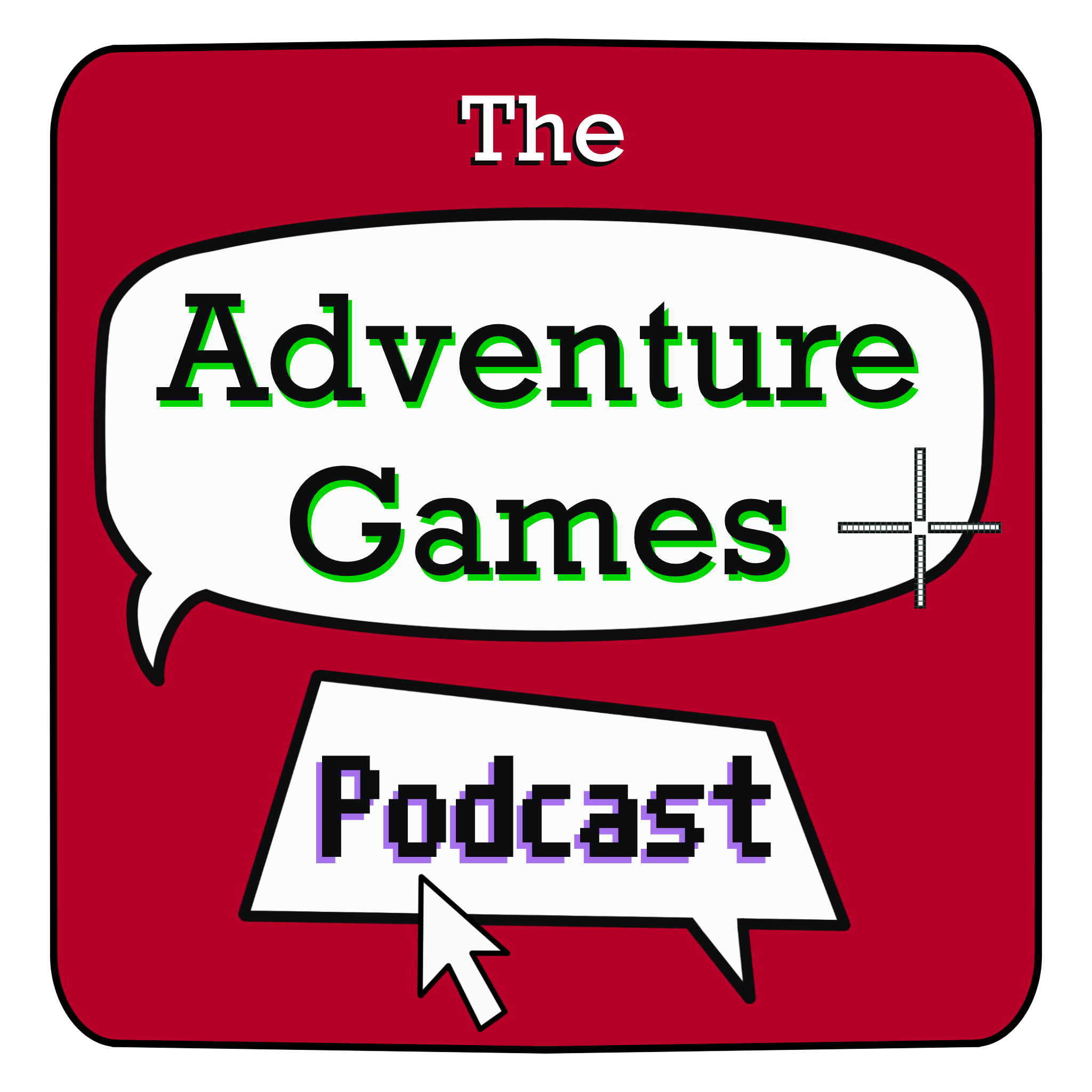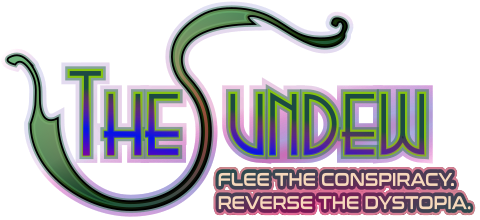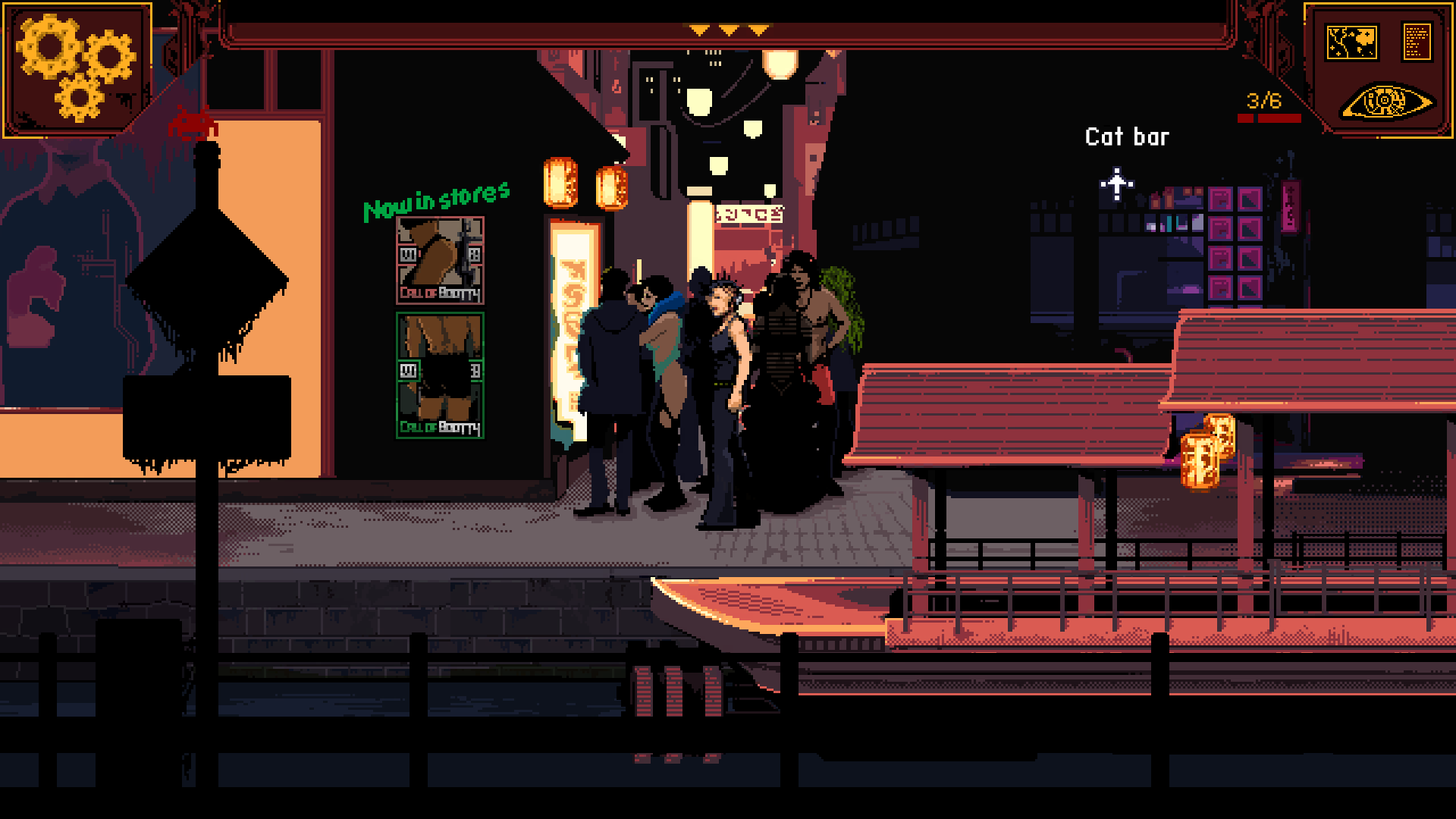Interview with Clemenc from 2054, Developer of The Sundew
1. Hello! Thank you for agreeing to the interview! Before we talk about your game please introduce yourself and let us know your favourite adventure games.
Hello, thank you for this interview! My name is Agnès Vuillaume (or Clemenc, on the web), I'm the solo developer of the video game The Sundew, and director of the video game studio 2054. My favourite adventure games are Gabriel Knight and Monkey Island (for my childhood games), and now... I have trouble choosing, but I would say The Red String Club and Thimbleweed Park.
2. When did you decide you wanted to make adventure games and how did you first get involved?
I decided to make adventure games after making the graphics for the indie game Dreadstar: The Quest for Revenge. It's a shoot 'em up, and after that experience, I thought "why not start making a game in the style of my favourite games, point'n'clicks?" And so the first elements of The Sundew were created. That was about 5 or 6 years ago.
3. Have you worked on other games before you started working on this game?
Yes, as I said, I worked on the graphics for Dreadstar, and before that I made a few little mobile games, to learn how to make video games. But they stayed on my own phone and were not published, they were just "tests" to see how long it takes to create a video game (even a small one), and how hard the work is. I'm a computer developer, but I hadn't worked on video games before this, so I wanted to learn before I started a "real" finished game to sell.
4. When did you start working on this game?
As mentioned before I started The Sundew around 2016-2017, I don't remember very well. At first I was working on it part-time, alongside a salaried job as a web developer in the apprenticeship tax. I really got into it with a Kickstarter campaign in October 2018. It did not succeed but allowed me to see that there was an audience interested in this kind of game.
5. Is it true that you worked on this game on your own and if so how did you manage to make this game on your own? Any particular advice for any other indie devs working on their own or in small teams?
I actually made this project as a solo dev. After having obtained financing from Pictanovo (the association that co-produced the game) on the basis of a demo that I had made entirely on my own, I was able to have the sounds of the final game redone and created by a sound designer, and I bought or had the music made. I asked Fabrice Bacquart, the creator of Dreadstar, for some help with the game design, and he made the port to Nintendo Switch.
Otherwise, for the computer development, the graphics, the technical choices and the editing of the game, I managed to do it myself, with a lot of patience, and a lot of coaching from Plaine Images (business incubator) and SpielFabrique (business accelerator).
I wasn't really alone, I was well surrounded, supported and helped. My family also did a lot of testing! I have a lot of very caring people around me.
For those who are starting out alone or in a small team, I would say: surround yourself, listen to others (but not too much, you need to know how to stay on a guideline), set yourself small goals and break your work into parts (to stay on course and not blow up the timing too much), build a network in the video game. And don't neglect the marketing side, it's, I think, 50% of the business. Show yourself, get people talking about you, start from the beginning, even if you prefer to stay incognito behind your computer, or find someone who will do it for you (community manager, editor, etc...).
6. Please tell us the story (without spoilers) of the game.
It's hard not to spoil, actually, so I'll try to keep it short ^^ the game tells the story of young Anna Isobe, a cyborg raised and partly created by the Japanese police, to reduce crime. Her work has been reduced to a minimum in favour of more docile robots. She doesn't know it yet at the beginning of the game, but she is actually part of a larger story, between several groups who wish to "control" her future and her involvement in a conspiracy that affects the activities of the government. This is a recurring theme in cyberpunk, but the ending adds a twist. You have to play it to find out!
7. Why did you decide to make a cyberpunk game? Were there any inspirations in particular?
I decided to make a cyberpunk game because science fiction and dystopias are my favourite themes, and because when I started making The Sundew, I felt that there weren't enough pixel art point'n'clicks in that kind of atmosphere. I wanted to deal with real issues, dear to cyberpunk (control of the masses, identity, human evolution with machines and science, etc...), through this story. The inspiration comes 80% from Blade Runner, for the atmosphere, the themes, and the Art Deco and nostalgic side.
8. Why did you decide to set the game in Japan? Have you ever been here?
I decided that the story would take place in Japan because I am fascinated by Japanese culture, and also because it is the country of robotics. I actually went to Japan once, for a month, I studied Japanese for 2 years, I studied the history of this country (especially the 9th century, for an aborted comic book project), ... I think this attraction comes from having Japanese as neighbours and friends at the age of 6 (the children did not speak French at all when I first met them, but we played together straight away), and I found them to be extraordinary people, whereas I was rather bullied by my classmates during childhood. That had a big impact on me.
9. What can you tell us about the main character Anna Isobe?
Anna Isobe is out of place in her job. She was raised to be an elite police officer, and has missed out on her youth. At the age of 21, when the game takes place, she drinks a lot of alcohol and prefers to party than to work in what she thinks is a mediocre environment, and at the same time she dreams of being able to show her exceptional abilities by carrying out exceptional missions. She is arrogant and a little too sure of herself, but perhaps that is also part of what keeps her going in the game's story.
10. Can you tell us anything about other characters we may meet?
The other characters are quite varied in style and character, but they too have quite strong characters. That's why there are interactions between Anna and them, by the way. Among Anna's colleagues, we find, among others, Arabella, her boss, who always seems to be angry (especially with Anna), Karin, the doctor, who is rather concerned about others, and Jimmy and Donna, rather whimsical computer scientists. Further on in the game we meet characters with different concerns, some centred on Anna's personality, which we either love or hate, and others who are totally indifferent, rather in their own world. But always with their own characteristics.
11. What type of puzzles and what level of difficulty can we expect in the game?
The puzzles are more about finding objects, using them and/or combining them. The text is also important for the development of the story, for example by playing with the possibility of choosing what Anna will do. There are also different endings. I try, in some places, to confuse the player by proposing choices that are not obvious, in order to force them to ask themselves questions. The difficulty is, I think, rather average. The player doesn't always know what to do, he or she has to search, despite the help available, like in the old adventure games. But it's not too complex either.
12. The graphics look beautiful! Would you consider them pixel art or are they a different type and why did you choose this particular style?
Thank you, I'm very glad you like it, I'm glad you like the style! Indeed for me it's pixel art, I like this style a lot, because for me it's similar to pointillism, or neo-impressionism, a French art movement of the 20th century that I particularly like (I was a painter for a few years). It is worked a little differently from other graphic techniques, by this particularity that the juxtaposition of colours gives a sensation or a colour different from the basic colour. It reminds me of optical illusions and it's a pleasure to work in pixel art. It can give very varied atmospheres.
13. What kind of music is in the game?
The sound in the game is designed to be part of the story. So we have ambient sounds for the majority of the scenes, sometimes with music related to the screens, sometimes just the sounds appropriate to the context. Only for the introduction and the conclusion was music created to bring an overall emotion, I would say. For the rest, the music is quite varied, depending on the characters encountered.
14. Can you tell us which languages the game will be released in?
The game is in 3 languages, French (original language), English and German. There are unfortunately no other translations in progress or planned at the moment.
15. Where can people find out more about the game and your studio?
To find out more about the studio, you can visit the website https://www.2054games.net For the game, apart from the Steam page itself (https://store.steampowered.com/app/1468380/The_Sundew/ ), the news will bring you more information about the game universe, at this address: https://steamcommunity.com/app/1468380/allnews/ You can also contact me directly on Twitter: https://twitter.com/TheSundewGame I try to answer as much as possible!
Thanks again for this interview, and I wish the best for you and for the readers :)






